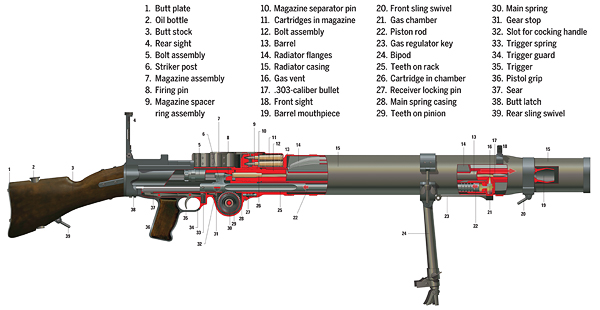
The most successful light machine gun of World War I was the brainchild of Dr. Samuel N. McClean, who conceived a gas-operated, water-cooled machine gun, and Colonel Isaac Newton Lewis, a U.S. Army artillery officer, who in 1911 modified it into a much simpler, lighter and more reliable air-cooled weapon. Festering animosity between Lewis and Brig. Gen. William Crozier, head of the U.S. Army Ordnance Department, led to the gun being rejected out of hand, so Lewis left the Army, moved to Europe and offered his design to the British, who accepted it for production by Birmingham Small Arms (BSA). The .303-caliber gun entered service as the Model 1914/Mark I Lewis.
The Lewis gun soon proved its worth during World War I, providing mobile firepower for British infantry units. The Allies also adapted it for aerial use; with its cooling jacket removed, the weapon was fitted on either a ring mounting for use by the observer or a mounting atop the upper wing that enabled the pilot to fire over his propeller, then pull the gun down and back to replace the empty drum magazine.
By 1916 positive reports from the front compelled the U.S. Army to order the gun Lewis had originally designed for it. In addition to the 145,000 units produced by BSA, U.S.-based Savage Arms made thousands of guns for Canadian forces and nearly 50,000 .30-06-caliber versions for the Americans. Reliable and versatile, the Lewis gun saw use by dozens of armies through and after World War II.




